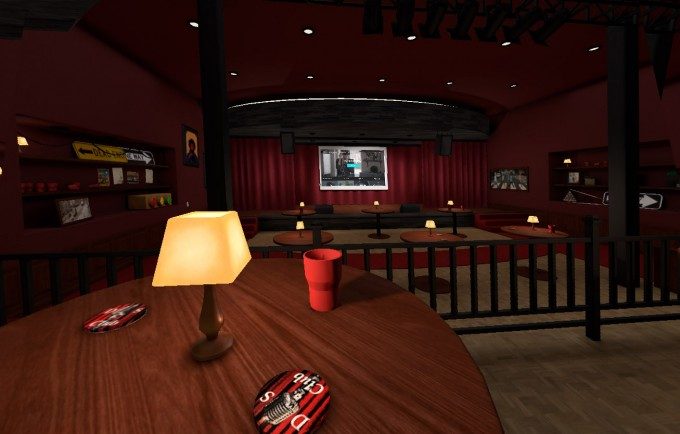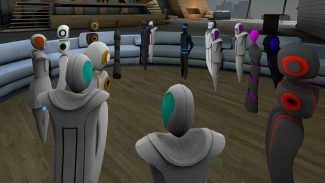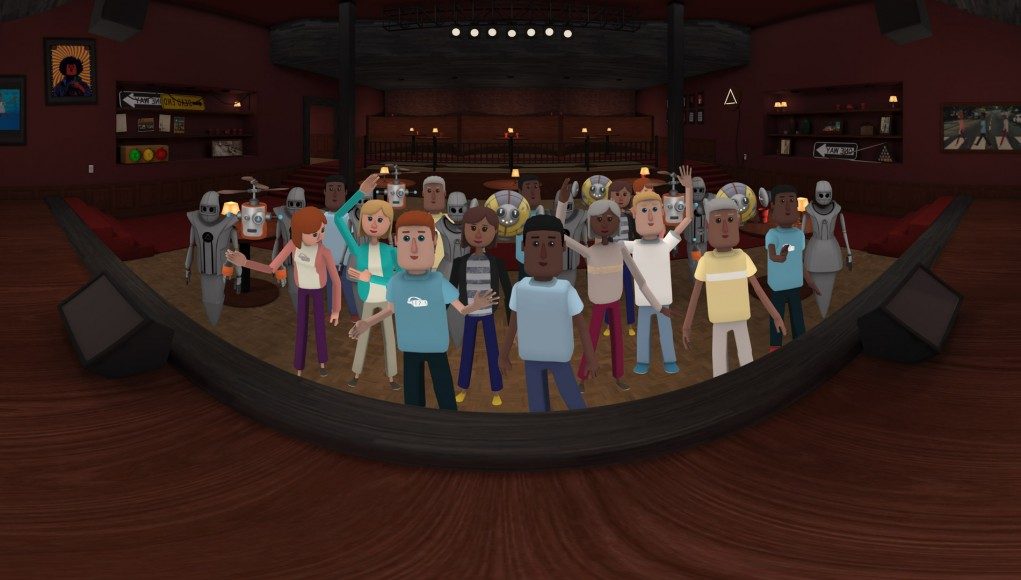AltspaceVR has today announced FrontRow, a new feature of the social VR platform which opens the door for mass-attended events in virtual reality.
Available on the Oculus Rift, HTC Vive, and Samsung Gear VR, AltspaceVR has made it easy to jump into a shared virtual reality spaces with friends to chat, browse the web, play board games, and more. But technical limitations have made it difficult for the platform to host singular spaces at large scales, with a recommended max occupancy sitting somewhere around 100 users. AltspaceVR has now created a new technique which aims to remove that limitation, in a sense.
FrontRow, as the company calls it, can intelligently mirror select users from one instance of a virtual room into many others simultaneously. To the users who are actually in the room, the mirrored user looks and sounds identical to any other real user in that room.

So when it comes to something like the upcoming Reggie Watts performance in AltspaceVR on Thursday, Watts’ avatar can be mirrored into hundreds of virtual rooms, instead of trying to cram the entire virtual audience into one space. The company says the tech could feasibly allow anywhere from 40 to 40,000 people to watch a performance like Watts’ simultaneously in virtual reality.
I got to see the tech in action for myself in a preview earlier this week. As promised, an avatar who was technically inside of another virtual room appeared to be standing directly in front of me. We could talk and interact in real-time as usual, without any additional latency compared to actually being in the same virtual space.

FrontRow also adds flexibility in how users can experience such virtual events. If you’d like to be in a room with strangers watching a performance on stage, you can easily join a public space which the performer is mirrored into; if you’d like to see the action up close with just a few friends, you can make a private space for your group with the performer mirrored just feet away from you for an intimate performance.
While this isn’t a true solution to the (arguably unnecessary) challenge of having thousands of virtual users in one place at the same time, it’s an elegant way to massively scale the sort of virtual events where a big crowd comes to see a small number of performers (like a comedy routine or a band).







